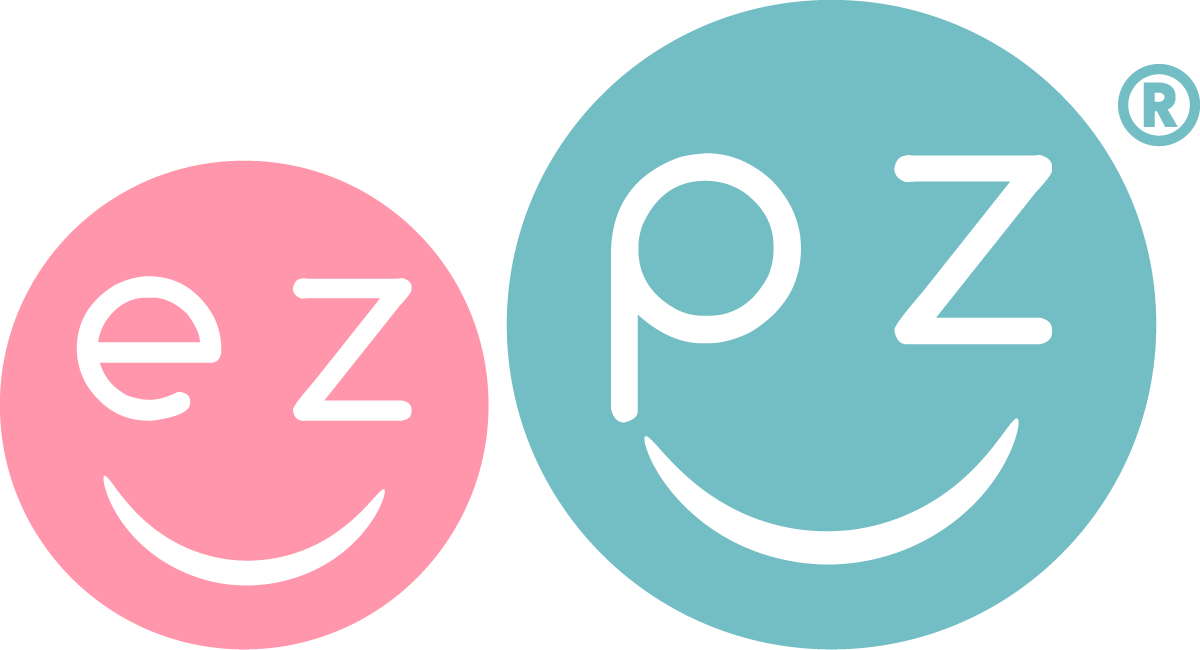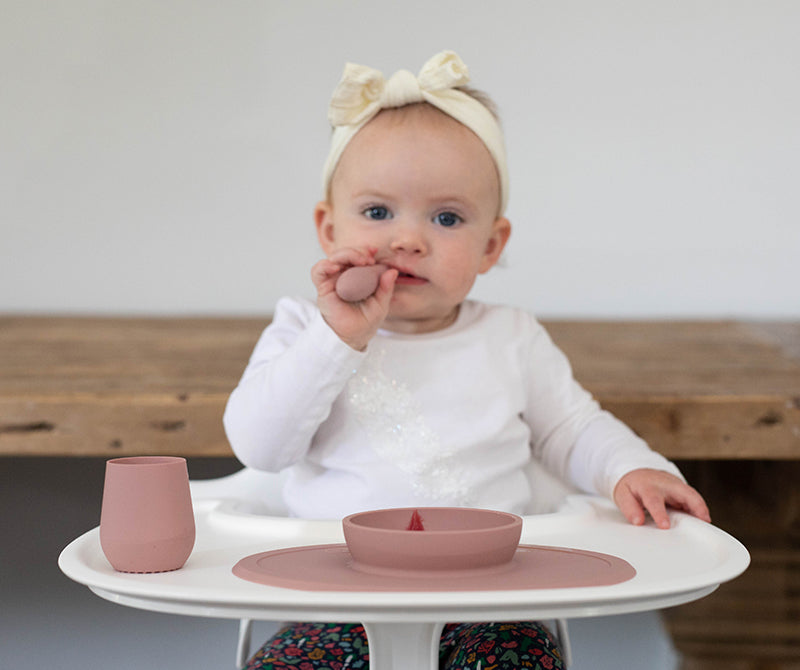Independent spoon feeding is a fun mealtime milestone for baby. But sometimes parents make a mistake or two along the way. As a feeding specialist, here are three of the most common mistakes I see when it comes to baby-led spoon feeding.
Mistake #1: Offering the Wrong Size Handle
Some parents tell me they decided not to continue with baby-led spoon feeding because of baby gagging and/or refusing food. Unfortunately, these families either offered baby a long handle spoon or a flat handle spoon.
- Long Handle: The problem with a long handle spoon is that it was designed for adults to feed babies, which is why babies can gag and choke when using them.
- Flat Handle: Spoons with a flat handle can go too deep into baby’s mouth, resulting in gagging, crying and refusal to eat.
- Solution: The ezpz Tiny Spoon has posterior tactile bumps to increase oral sensory awareness, which decreases gagging episodes. Plus, it has a short, fat, round handle with a raised rim to provide additional gagging and choking protection.
Mistake #2: Offering the Wrong Size Spoon Bowl
I have heard countless stories from parents that unknowingly chose the wrong spoon bowl for their baby.
- Large Spoon Bowl: Parents oftentimes offer a spoon with a large spoon bowl to decrease baby’s frustration with spoon feeding. Unfortunately, because the spoon bowl is too deep, some babies get too large of a bite and they choke. Using a properly proportioned spoon helps keep baby safe.
- Overfilled Spoon: Parents also tell me that they have overfilled their baby’s spoon because they were in a rush and wanted baby to eat a bit faster, only to have their baby gag.
- Solution: The narrow design of the Tiny Spoon fits baby’s mouth perfectly and decreases gagging caused by overfilled spoons. In addition, the spoon bowl has gentle sensory bumps that activate lip and tongue movements, which decreases the gag reflex. The Tiny Spoon is perfect for babies learning how to dip + taste foods, as well as babies looking to scoop softened solids!
Mistake #3: Stopping Baby from Using Their Hands
I have observed feeding therapists and parents stop a baby from using their hands to grab food when they are introducing spoon feeding.
- Grabbing Their Hand: When parents grab baby’s hand to stop them from snagging a bite of food, some babies react adversely. This approach can be too aggressive, and it can cause some babies to shut down and refuse to eat. We need to allow baby to participate in feeding with their hands (even when we are teaching spoon feeding) because we want baby to continue to have a positive relationship with food, utensils and eating.
- Solution: Even if baby wants to eat with their hands, you can continue to offer a spoon during this time. The ezpz Tiny Spoon promotes baby-led feeding by focusing on the fine motor movements needed for independent eating. The spoon has stability bumps on the bottom (making it easy for baby to grab) plus a non-slip grip that makes feeding movements to the mouth more effective. Winning!
There is no such thing as a perfect parent (especially when feeding kids), so if you have made one of these mistakes don’t worry! Just make a positive change and move on with your feeding journey. Share some of your Tiny Spoon success stories with the hashtags #ezpzfun #tinyspoon.



